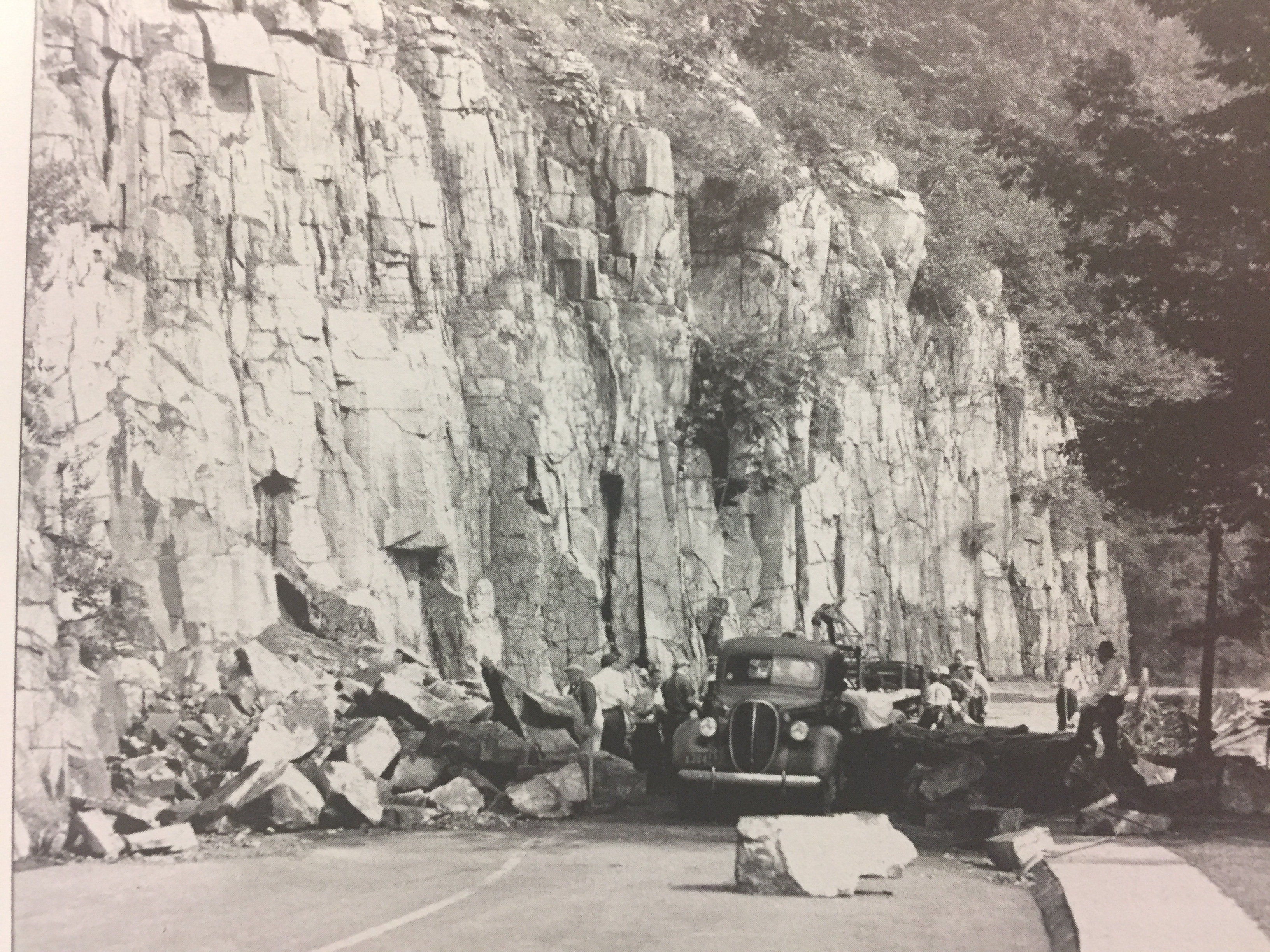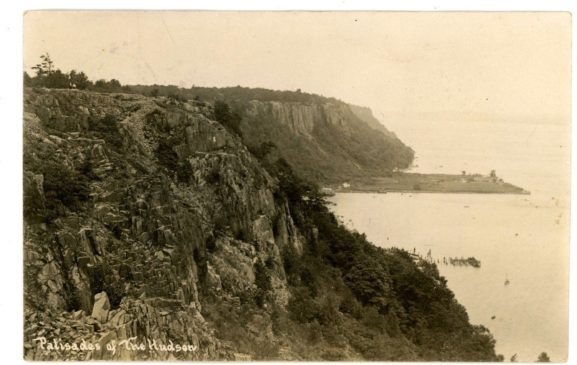
This week in local history: An Aug. 10, 1942 rockslide in the Palisades Interstate Park meant some quick cleanup was on the agenda in order to reopen Dyckman Hill Road in Englewood Cliffs.
That rockslide took place 75 years ago this week. From our own perspective, a lifetime has passed since this photo was taken.
And yet, it doesn’t even register on the timeline of the Palisades Cliffs.
The diabase (volcanic rock) cliffs, which form a canyon around the Hudson River, date back 200 million years. They formed when a thick wedge of molten magma was forced between layers of sandstone and shale, and subsequently cooled and hardened beneath the surface. Over the course of millions of years, water eroded the softer sandstone, leaving the harder stone of the cliff columns behind.
When the cliffs formed toward the end of the Triassic Period, all the land on Earth was still one big continent called Pangaea.
Our little corner of it was located against the present-day northwest coast of Africa. Early mammals were starting to appear – mostly nocturnal, insect-eating creatures only several inches in length.
Amazingly, the entire 200,000-year history of modern humans took place in just the most recent 0.1 percent of the Palisades Cliffs’ history.

